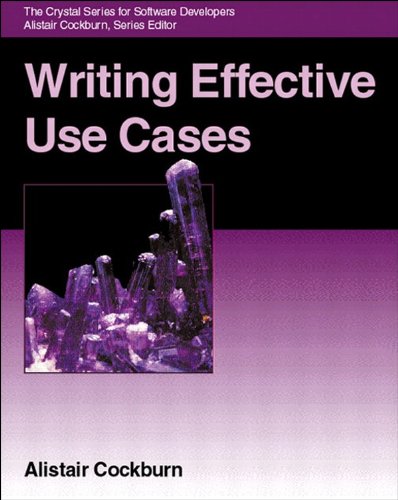Writing Effective Use Cases pdf
Par gaylord john le samedi, novembre 26 2016, 23:16 - Lien permanent
Writing Effective Use Cases by Alistair Cockburn


Download eBook
Writing Effective Use Cases Alistair Cockburn ebook
Format: pdf
ISBN: 0201702258, 9780201702255
Publisher: Addison-Wesley Professional
Page: 249
Without having the proper understanding of use cases and the purpose of writing one, writing an effective case to elicit functional requirements can be pretty…useless. Alistair Cockburn's in his pivotal book “Writing Effective Use Cases” describes five levels of use cases (a use case isn't exactly a user story, but this concept is a great parallel for writing user stories at an appropriate level). Thursday December 10 – Friday December 11 9:00 – 4:30 each day. Cockburn bridges the gap by stressing the need for written scenarii. [2] Willem Van Galen, Use Case Goals, Scenarios and Flows, 13 November 2012. Introduction Use cases are a popular way to express software requirements. Another chapter of "Writing effective use cases". I knew what preconditions were (the things that must be true about the situation in order for the use case to be possible). Writing Effective Use Cases Class 2009-12-10. [3] Alistair Cockburn, Writing Effective Use Cases, 12th Printing, November 2004. Submitted by Alistair on Mon, 2009-11-02 11:08. They are popular because they are practical. Six simple steps to writing effective Use Cases. Use cases: preconditions, guarantees and triggers. The first four steps in writing use cases deal with reviewing the activity diagram, finding the subject boundaries, listing the primary actors and their goals, and identifying and writing overviews of the major use cases based on these results. Writing Effective UC Standard UML doesn't say much about use cases. For many, they are just diagrams. These use cases will form the basis of the . Specifically, they needed to begin writing the normal flow of events; that is, they should perform the eighth step for writing effective use cases.